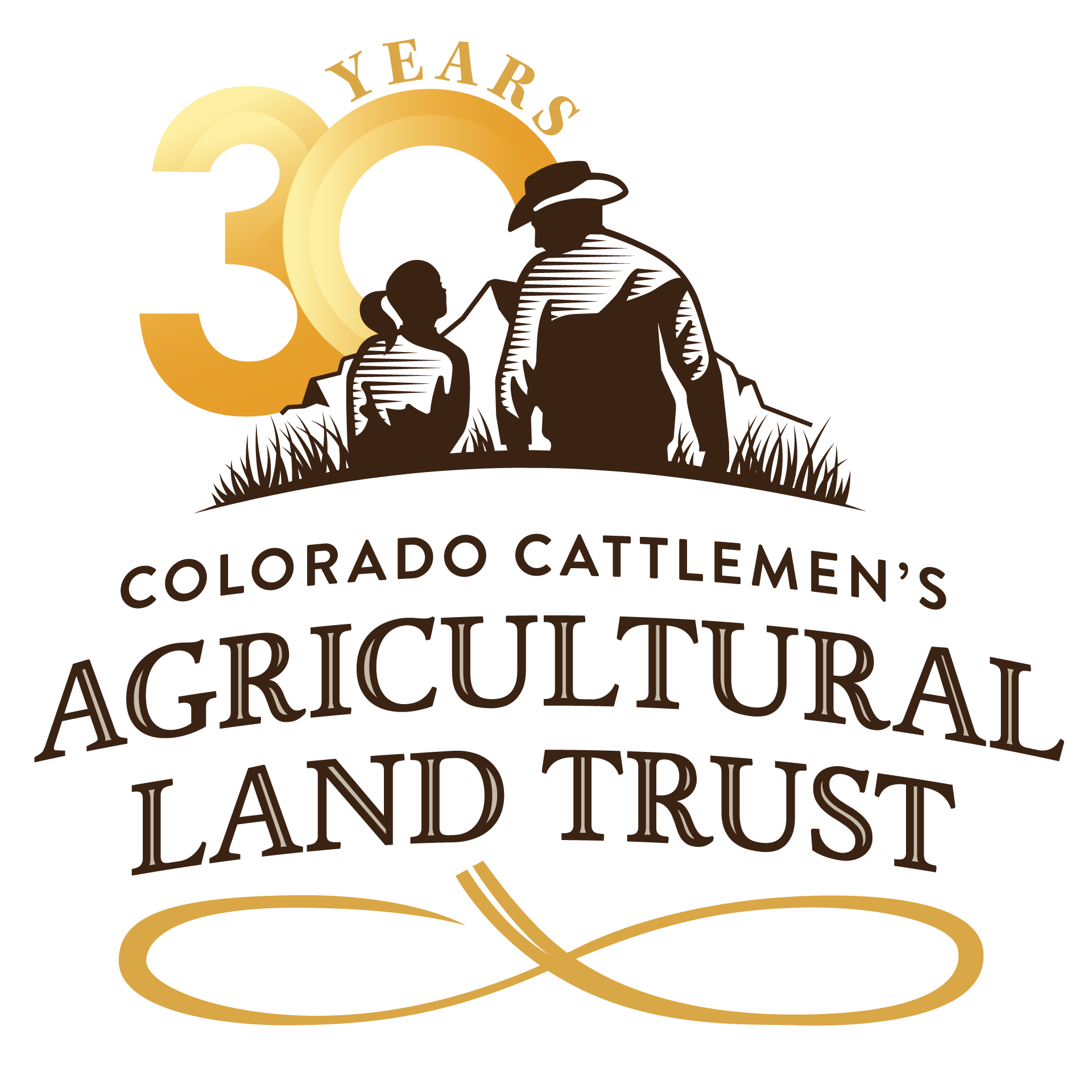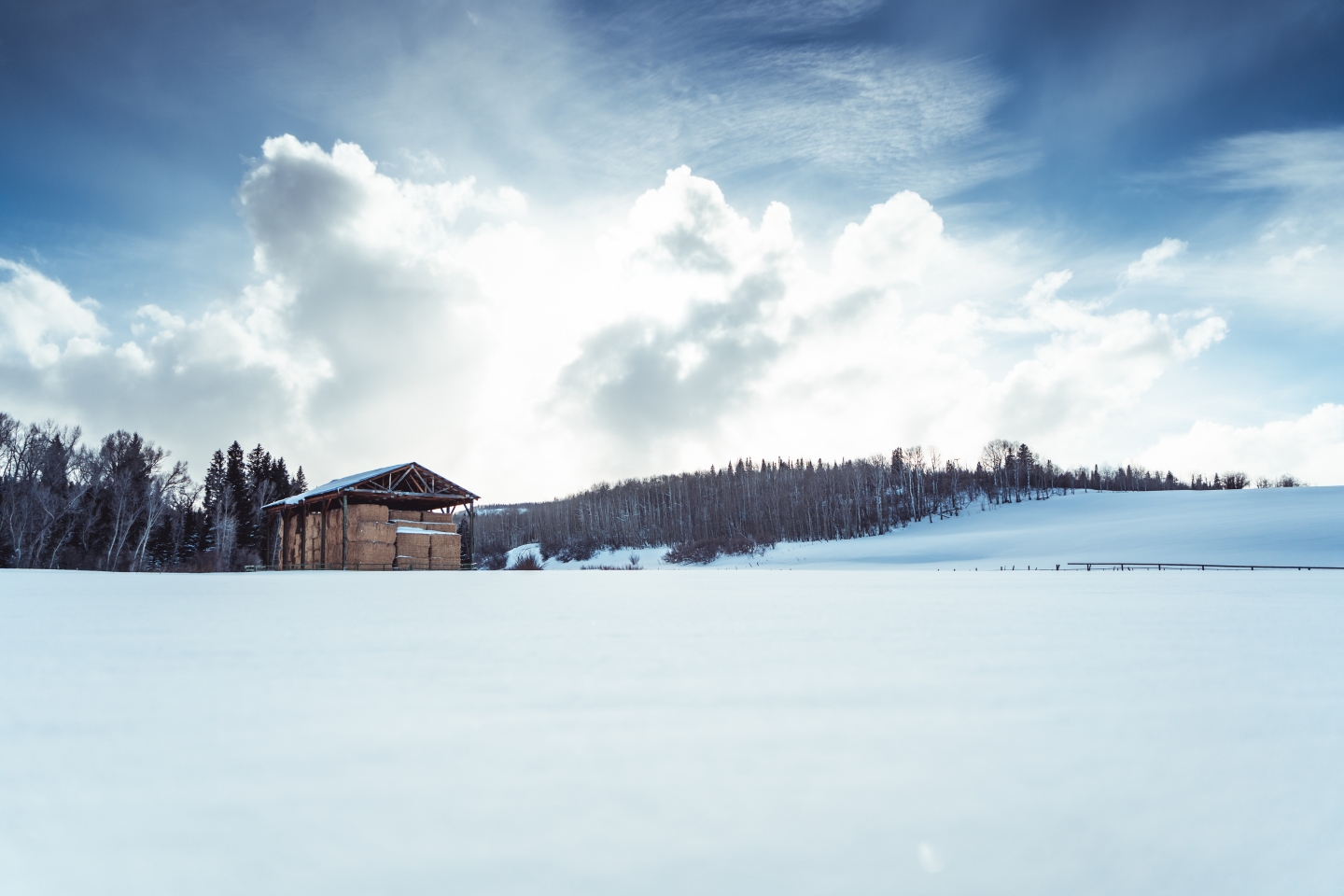The Knott Home Place
The 1930s was a defining decade for the United States; the Dust Bowl swept across the nation’s prairies, and the decade was bookended by the crash of the stock market in 1929 and the beginning of America’s involvement in World War II in 1941. The families who held onto their farming and ranching operations during the thirties were strong, hearty, and rare. While less impacted by dust and drought than eastern Colorado or Nebraska, northwest Colorado saw its fair share of families forced to sell their ranching operations due to the economic fallout. Today, what is known as the Knott Home Place, located south of Steamboat Springs, was one such property. Luckily, it landed in loving hands.
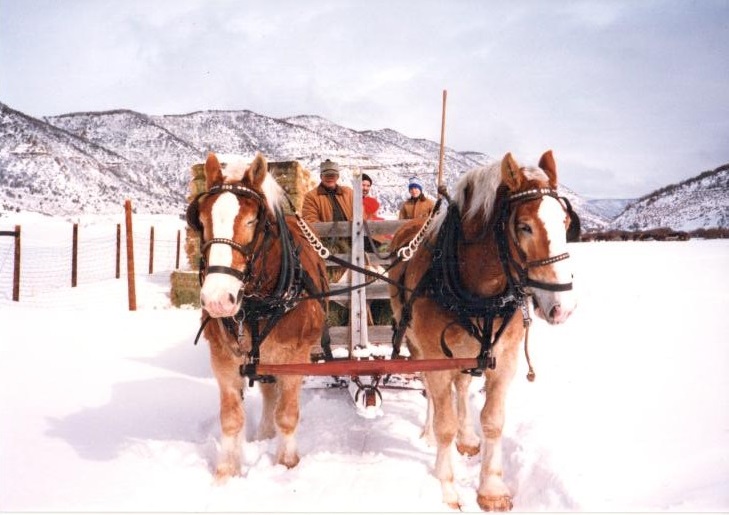
In 1936, Courtney and Emma Ives traded their ranch in Steamboat to purchase a ranch south of town. The Ives’ primarily used the new property to raise sheep, but their background was in breeding and selling draft horses. Automobiles certainly existed in 1936, but ranch work in the mountains, and particularly feeding livestock in deep winter snow, required the use of original horse power. Finding early success on the ranch, Courtney and Emma slowly expanded their operation to include neighboring property. Eventually, they would even work with the U.S. Forest Service to lease public land to summer their sheep on. The lease was on Storm Mountain, what we know today as Mt. Werner and the Steamboat Ski Area. Imagine, instead of hikers and bikers dotting the slopes like they do today, ewes and lambs were spotted grazing along the mountain in the summertime. The Steamboat gondola and mid-mountain lodges certainly weren’t in place back then!
In addition to expanding their property, Courtney and Emma would also watch their family expand on the ranch. Together, they would pave the way for two daughters, multiple grandchildren, great-grandchildren, and even great-great grandchildren to call the Knott Ranch home. Courtney and Emma’s daughter, Doris, would eventually marry local rancher Dan Knott, and they would be the first generation to take over management of the property, and with it, a name change. The Knott Home Place was now the ranch’s official designation.
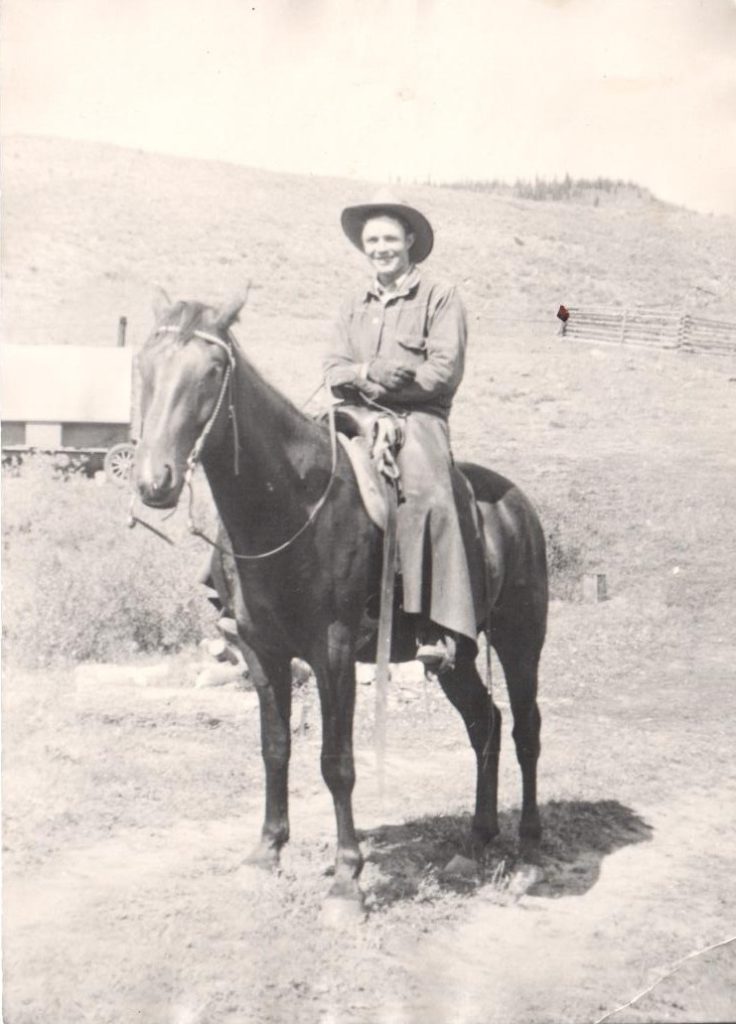
Dan Knott as a young man. 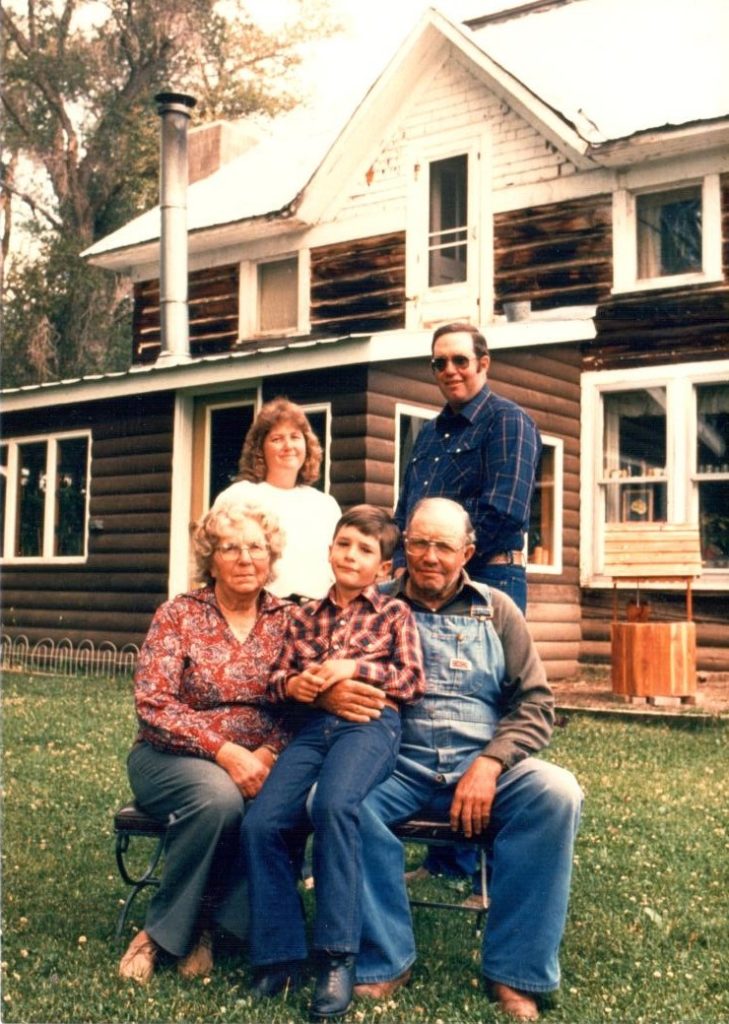
Tyler Knott as a child with parents, Debbie and Bernard (back) and grandparents, Doris and Dan Knott (front). 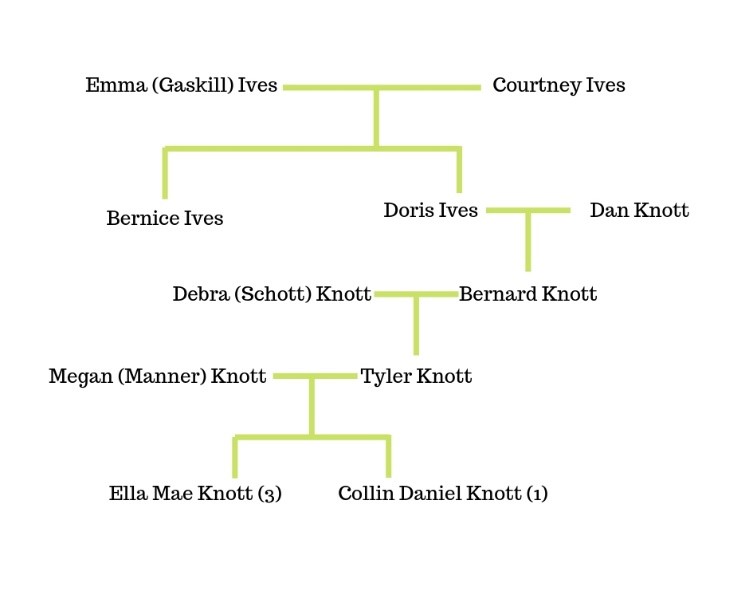
Generations on the Knott Ranch
Today, while the Knott family still raises market lambs in the summer, the ranch is primarily a cow-calf operation with enough native grass hay produced on the property to sustain the herd through the long Routt County Winters. Three-year-old Ella Mae Knott (named after Dan Knott’s mother) and her one year old brother, Collin, follow four generations before them on the Knott Ranch. This is the property that their father and grandfather grew up on and where two sets of their great grandparents are buried. While Ella is only three, she still gets taken along to move cattle and monitor irrigation. She particularly enjoys calving season, when a cold calf might have to call the family mudroom home for a night.
To ensure that this place and what it represents will be available for Ella and Collin, and the sixth, seventh, and eighth generations of their family, the Knotts decided a conservation easement was the right tool to conserve their ranch and their family heritage. Over the course of several years, and in partnership with the Colorado Cattlemen’s Agricultural Land Trust (CCALT), the family conserved 1,940 acres of their property, forever protecting the land and water that Courtney and Emma were drawn to so long ago; and honoring the blood, sweat, tears, and effort that multiple generations of their family have invested in the land since.
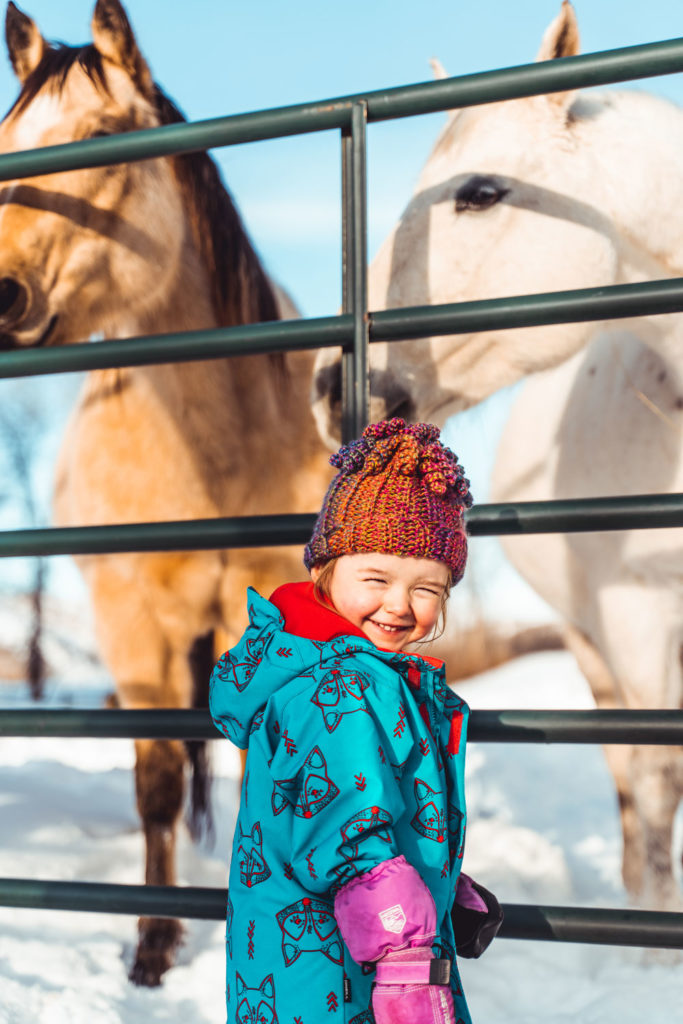
Ella with her horses on the Knott Home Place. 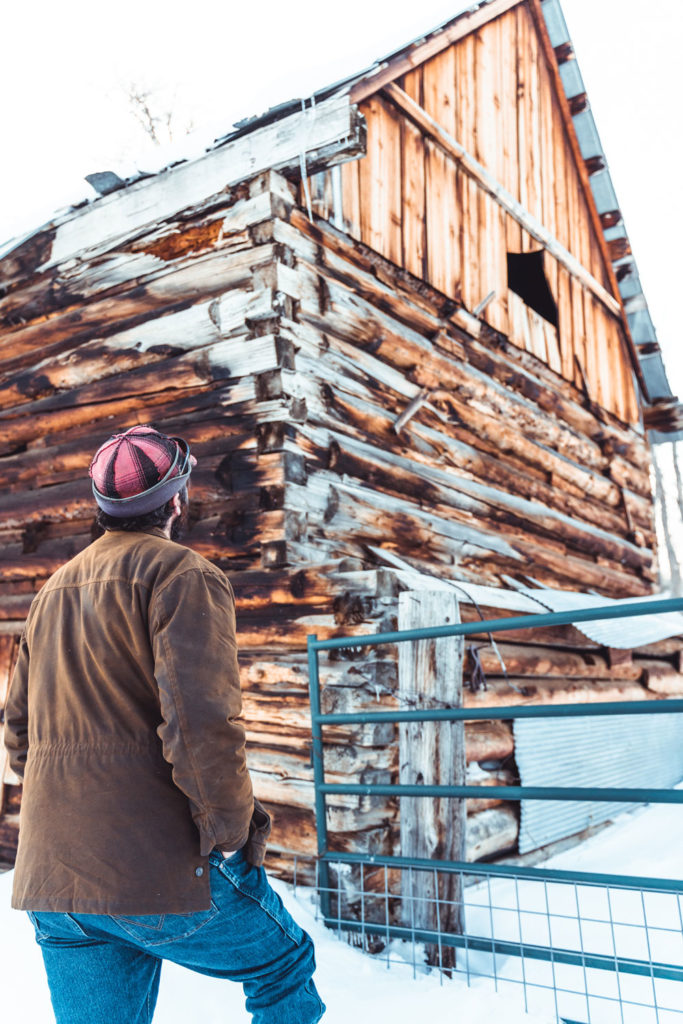
Tyler Knott surveying the old barn at the ranch headquarters. It’s close to 100 years old. 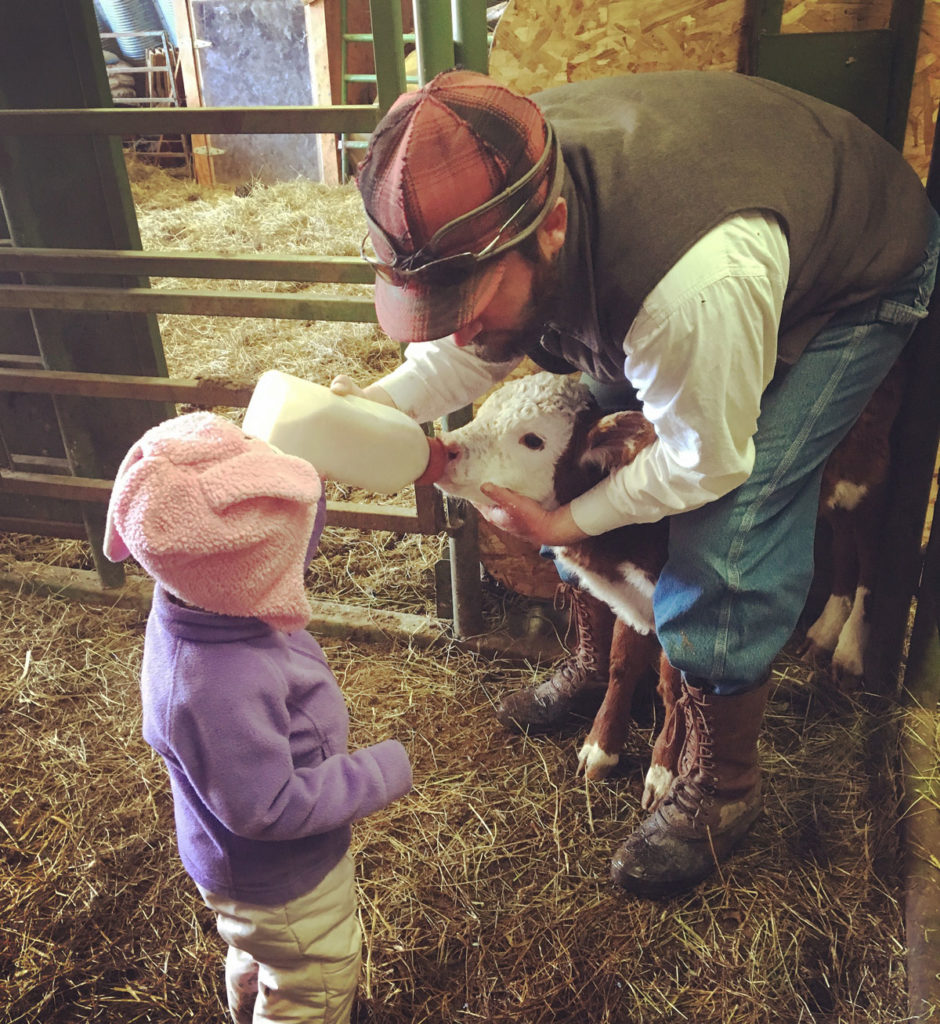
Ella helping her dad feed calves. 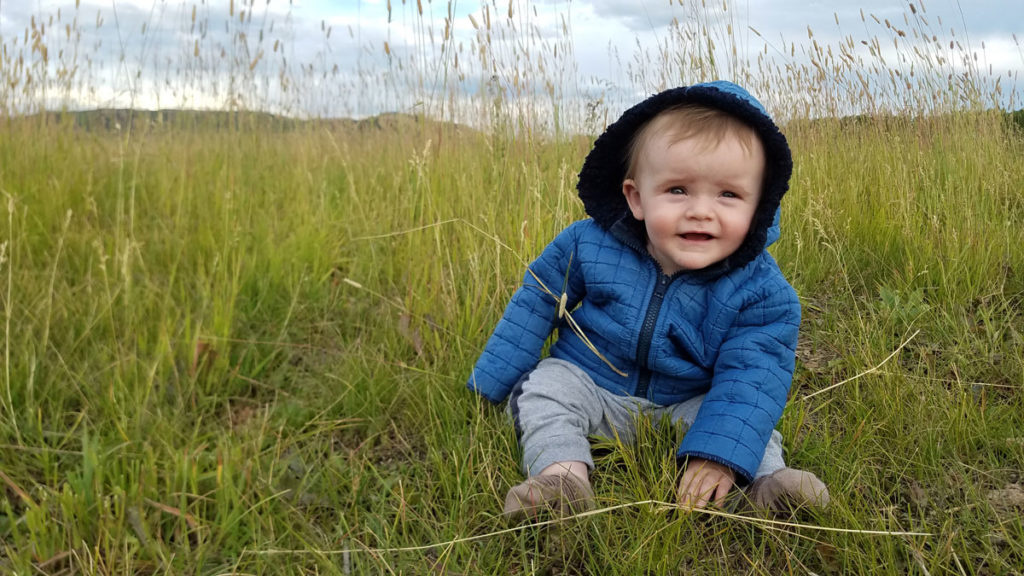
Collin tagging along in the pasture.
Properties like the Knott Ranch are particularly special to CCALT because they connect conservation to people in a way that not all conservation projects can. By placing their ranch in a conservation easement, the Knott family will not only leave a legacy of land in Routt County, but they will also leave a legacy of family and a chance for others to follow in the their footsteps and carry on this ever-threatened way of life.
“In 2036, we want to see this property become a Centennial Ranch. We want to raise the fifth generation on this ranch and give them the opportunity to connect a sense of self with a sense of place. They will face their own challenges when it comes time for them to run this operation. But for the foreseeable future, we feel we have the ranch in a stable position.” – Tyler Knott (Ella and Collin’s dad)
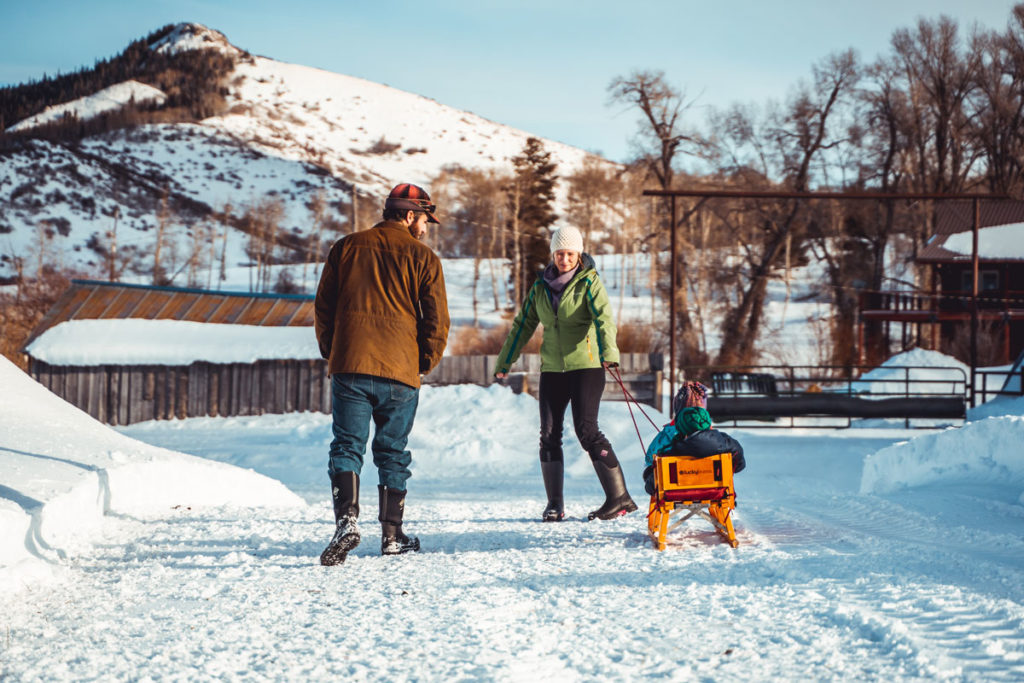
*To receive a Centennial Farm or Ranch classification, a property must be a working farm or ranch and must have remained in the same family continuously for 100 years or more.
**Routt County is a conservation priority for CCALT, and to date, the land trust has conserved more than 32,000 acres in the county.
